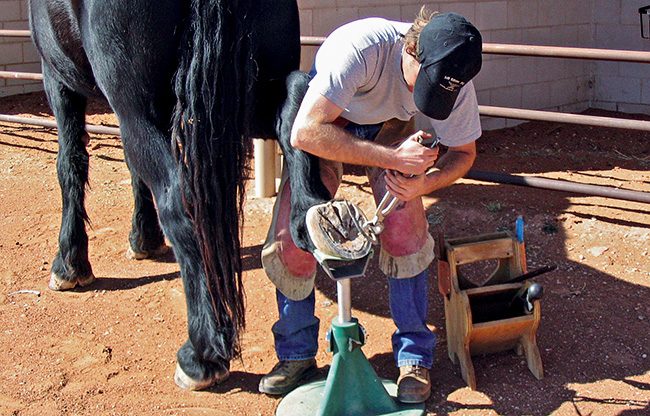American Farriers Journal
American Farriers Journal is the “hands-on” magazine for professional farriers, equine veterinarians and horse care product and service buyers.

Dry draft horse feet are hard on horseshoers and tools alike. Here, author John Bradshaw is wearing out a good pair of hoof nippers on a thick, hard Percheron hoof wall.
Every area has virtues and hardships for its horseshoers. In the Southwest, dry feet are the main hardship and dealing with them is a constant battle.
Dry-climate farriers do not often face problems like thrush or white line disease, or deal with the aggravations of working in the rain or snow. They do, however, regularly work on soles and frogs that are as tough as flint and laugh at hoof knives, as well as hoof walls so hard they crack like a pistol shot when nippers are finally forced through them.
Those dry feet dramatically increase the labor involved in trimming a foot, especially on the very hardest hooves; all a farrier’s strength is required to shut the nippers each time, over and over.
On those horses, once the feet are trimmed, it seems as if the job is done — regardless of the fact that no shoes have even been shaped yet, much less nailed on and clinched.
Stuart Eddy, an experienced horseshoer from Albuquerque, N.M., shoes many different breeds and disciplines of horses in New Mexico’s high desert. The average annual rainfall there is only 9 inches.
“That’s not a whole lot,” Eddy says, stating the obvious. It’s not unusual for the area to go 45 to 90 days without any moisture, occasionally longer.
Not far…